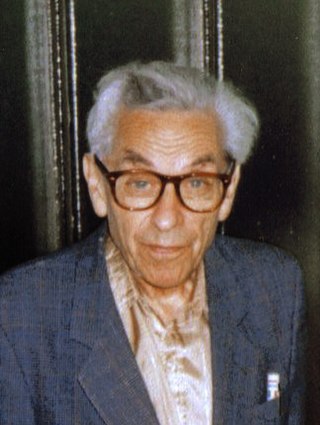Ramsey theory, named after the British mathematician and philosopher Frank P. Ramsey, is a branch of the mathematical field of combinatorics that focuses on the appearance of order in a substructure given a structure of a known size. Problems in Ramsey theory typically ask a question of the form: "how big must some structure be to guarantee that a particular property holds?"

Extremal graph theory is a branch of combinatorics, itself an area of mathematics, that lies at the intersection of extremal combinatorics and graph theory. In essence, extremal graph theory studies how global properties of a graph influence local substructure. Results in extremal graph theory deal with quantitative connections between various graph properties, both global and local, and problems in extremal graph theory can often be formulated as optimization problems: how big or small a parameter of a graph can be, given some constraints that the graph has to satisfy? A graph that is an optimal solution to such an optimization problem is called an extremal graph, and extremal graphs are important objects of study in extremal graph theory.

Paul Erdős was a Hungarian mathematician. He was one of the most prolific mathematicians and producers of mathematical conjectures of the 20th century. Erdős pursued and proposed problems in discrete mathematics, graph theory, number theory, mathematical analysis, approximation theory, set theory, and probability theory. Much of his work centered around discrete mathematics, cracking many previously unsolved problems in the field. He championed and contributed to Ramsey theory, which studies the conditions in which order necessarily appears. Overall, his work leaned towards solving previously open problems, rather than developing or exploring new areas of mathematics.

Pál Turán also known as Paul Turán, was a Hungarian mathematician who worked primarily in extremal combinatorics.

Hugo Hadwiger was a Swiss mathematician, known for his work in geometry, combinatorics, and cryptography.

In mathematics, the "happy ending problem" is the following statement:
Erdős' conjecture on arithmetic progressions, often referred to as the Erdős–Turán conjecture, is a conjecture in arithmetic combinatorics. It states that if the sum of the reciprocals of the members of a set A of positive integers diverges, then A contains arbitrarily long arithmetic progressions.

Proofs from THE BOOK is a book of mathematical proofs by Martin Aigner and Günter M. Ziegler. The book is dedicated to the mathematician Paul Erdős, who often referred to "The Book" in which God keeps the most elegant proof of each mathematical theorem. During a lecture in 1985, Erdős said, "You don't have to believe in God, but you should believe in The Book."
In additive number theory, an additive basis is a set of natural numbers with the property that, for some finite number , every natural number can be expressed as a sum of or fewer elements of . That is, the sumset of copies of consists of all natural numbers. The order or degree of an additive basis is the number . When the context of additive number theory is clear, an additive basis may simply be called a basis. An asymptotic additive basis is a set for which all but finitely many natural numbers can be expressed as a sum of or fewer elements of .
In extremal graph theory, the Erdős–Stone theorem is an asymptotic result generalising Turán's theorem to bound the number of edges in an H-free graph for a non-complete graph H. It is named after Paul Erdős and Arthur Stone, who proved it in 1946, and it has been described as the “fundamental theorem of extremal graph theory”.
In mathematics, in the area of additive number theory, the Erdős–Fuchs theorem is a statement about the number of ways that numbers can be represented as a sum of elements of a given additive basis, stating that the average order of this number cannot be too close to being a linear function.
In number theory, a Sidon sequence is a sequence of natural numbers in which all pairwise sums (for ) are different. Sidon sequences are also called Sidon sets; they are named after the Hungarian mathematician Simon Sidon, who introduced the concept in his investigations of Fourier series.
András Hajnal was a professor of mathematics at Rutgers University and a member of the Hungarian Academy of Sciences known for his work in set theory and combinatorics.
In graph theory, the De Bruijn–Erdős theorem relates graph coloring of an infinite graph to the same problem on its finite subgraphs. It states that, when all finite subgraphs can be colored with colors, the same is true for the whole graph. The theorem was proved by Nicolaas Govert de Bruijn and Paul Erdős, after whom it is named.
Jon Hal Folkman was an American mathematician, a student of John Milnor, and a researcher at the RAND Corporation.
The Erdős–Turán conjecture is an old unsolved problem in additive number theory posed by Paul Erdős and Pál Turán in 1941.
In additive number theory, an area of mathematics, the Erdős–Tetali theorem is an existence theorem concerning economical additive bases of every order. More specifically, it states that for every fixed integer , there exists a subset of the natural numbers satisfying
Hunter Snevily (1956–2013) was an American mathematician with expertise and contributions in Set theory, Graph theory, Discrete geometry, and Ramsey theory on the integers.